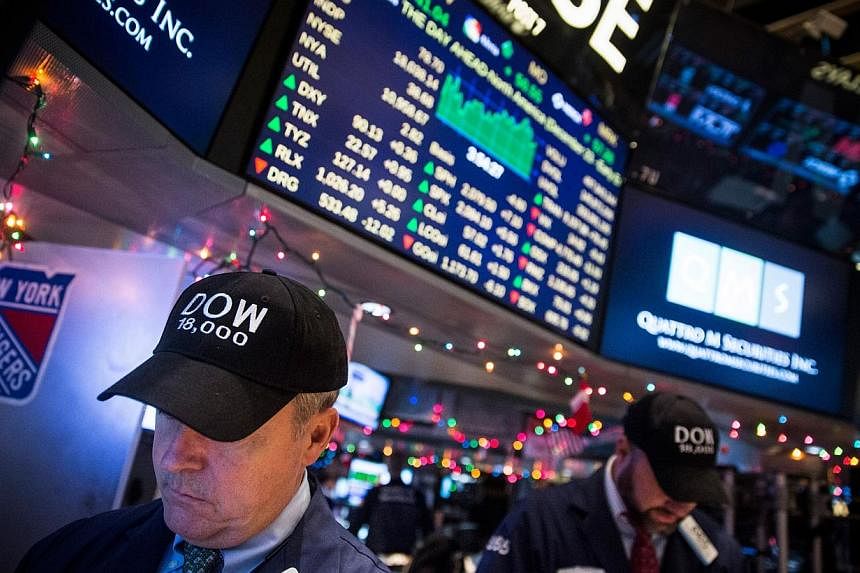SYDNEY (Reuters) - The United States dollar hovered at its highest level in nearly nine years against a basket of major currencies on Wednesday after stunningly strong US economic growth spurred markets to bring forward the timing of a likely hike in interest rates.
The dollar index reached highs not seen since April 2006 as the greenback gained ground to 120.82 yen and the euro sank to a fresh 28-month low of US$1.2165.
Revised figures on Tuesday showed the US economy grew at an annualised 5 per cent clip in the third quarter, its quickest pace in 11 years.
The upbeat data drove US stocks to yet another record close and prompted another move higher in US yields. The two-year yield jumped to 0.747 per cent, reaching a high not seen in almost four years.
Traders suspect US yields will rise even further as markets fine tunes expectations of the timing of an eventual rate hike, a factor that is likely to underpin the greenback.
The dollar index is up more than 12 per cent so far this year, on track for its best annual performance in nearly a decade.
The rally took off only in the second half of 2014, a long time coming for those who had turned bullish this time last year.
The 'buy-the-dollar' trend should persist given little incentive for investors to look at either the euro or yen with central banks in the euro zone and Japan under pressure to stimulate economic growth.
Traders said a risk to this outlook came from Russia, where the rouble currency recently went into a tailspin, sparking fears of contagion across emerging markets.
Last week's rouble meltdown sparked a flight to safety that saw currencies such as the Swiss franc surge. That forced the Swiss National Bank (SNB) to announce a negative interest rate for the first time since the 1970s in order to stem the inflow.
"Looking into next year a more significant rout in emerging markets could lead to more defensive action from central banks such as the SNB and the BoJ," said Jane Foley, senior currency strategist at Rabobank.
"It is also likely that other central banks will be keeping one eye on emerging markets next year, not least the Federal Reserve." Commodity currencies are also likely to remain out of favour early in 2015 given slowing global demand has seen oil and iron ore prices tumble.
The Australian dollar is expected to fall below 80 US cents in the months ahead, having shed over 9 percent so far this year to a 4-1/2 year low of $0.8087.

